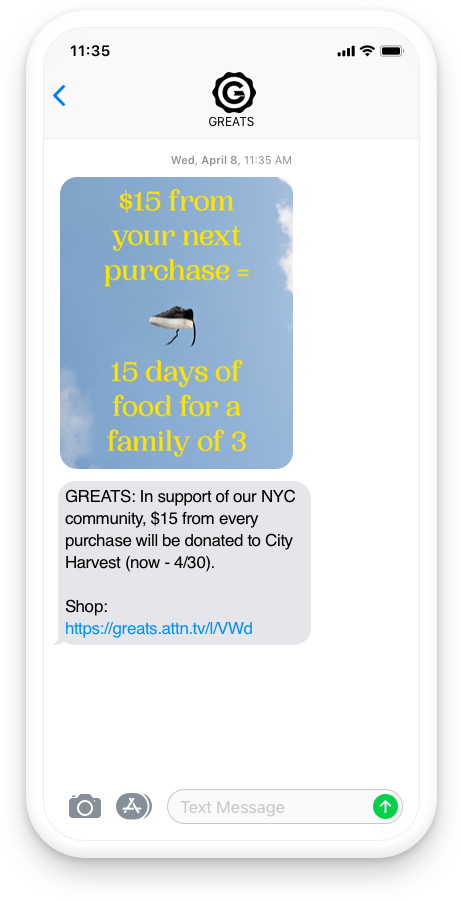
New releases
A smarter, simpler Attentive
Explore new features →
Explore new features →

We recently spoke with three e-commerce marketing experts—Michelle Cordeiro Grant, Founder & CEO of LIVELY; Ryan Babenzien, CEO & Co-Founder of GREATS; and Alexander Sienkiewicz, CMO of SwimOutlet—on how they’ve adjusted their strategies in response to COVID-19, as well as their outlook on the future of e-commerce trends and campaign planning.
Most companies outline their marketing strategies months in advance. However, over the past few months, marketers have had to quickly pivot many of those strategies. One suggestion from the e-commerce experts we spoke with is to focus a bit more than usual on brand marketing to build deeper relationships with your existing audience.
For example, online swimwear retailer SwimOutlet worked with Attentive to launch a mobile messaging campaign in which they tapped a group of Olympians and top swimmers to record inspirational messages for other swimmers and the swim community. SwimOutlet then delivered those video and audio messages to subscribers via text messaging.
“Our messaging strategy needed to change,” said Alexander Sienkiewicz, CMO of Swim Outlet. “There’s a need to empathize with our customers. We’ve shifted our strategy to provide less promotional messages and more hopeful and uplifting messages, like our recent partnership with Olympic athletes and Attentive.” Ultimately, customers are going to remember the brands that were there for them during these uncharted times.

As millions are living with restrictions and stay-at-home orders, brands have shifted their strategies to become more community-focused. This could be through social media, live sessions like workouts or meditation, branded music playlists, or philanthropy efforts. “We know that people were likely going to lose their jobs and would need food, so we partnered with City Harvest. We had never worked with a food charity before, but it seemed to be the logical choice,” said Ryan Babenzien, Co-Founder and CEO of GREATS.
It’s important to have a healthy business and to continue to scale your products but it’s also imperative that in times like these, we humanize our brands. Partner with local community initiatives and organizations that are helping those in need, whether it’s providing food, PPE equipment, or monetary donations. For example, GREATS and LIVELY are two of the many Attentive customers participating in the BRANDS X BETTER coalition, a collection of brands that have pledged to donate a portion of their proceeds to charities during COVID-19.

In times of turbulence, it’s important to remember why you exist as a business and what your core brand values are. There’s a necessity to make decisions swiftly and effectively so that your company can be resilient. If something isn’t working, pivot, and move forward again. Ask your customers for feedback to help inform product decisions and provide personalized content that resonates with them.
What you do in these types of moments defines how you will be thought of as a company for years to come. “Understand your resources and do what you have to do to protect your team,” said Michelle Cordeiro Grant, Founder and CEO of LIVELY. “But do those things without compromising your brand’s core values.”
While e-commerce leaders are focused on trying to navigate the current climate, it’s important to also keep an eye on what happens after this subsides—the recovery period. There are going to be massive changes across brand and consumer behaviors, from how we sell to how we shop. It’s essential to keep that in mind when creating a plan for the period when restrictions and stay-at-home orders are slowly lifted.
Do what’s right for your workers and for your customers. Solicit feedback from your employees who will be at the forefront when stores re-open. Invite your customers to share what would make them feel comfortable and safe when returning to your stores in-person. Listen carefully to this feedback and take it into consideration when developing your recovery plan.
Much of our lives have been interrupted, and in many ways—completely redefined, due to the effects of COVID-19. While the coming market might present unique challenges, it doesn’t mean we can’t operate and find solid footing in these less than favorable conditions. Leaders need to make informed decisions while acting swiftly. “Remember that Disney, General Electric, and Microsoft were built during tough, financial hardships,” Grant said. “Many great companies found their strength in times of turbulence. As leaders, our biggest challenge is not to project survival but to project stability.”